Key Takeaways
- The sumo and conventional deadlift are equally great for building whole-body muscle and strength.
- The sumo deadlift demands more of your quads whereas the conventional pull demands more of your back muscles.
- The best style for you is the style that you find most comfortable and that best meets your training needs.
If you want to build a strong, muscular, and powerful body, then you want to deadlift.
It’s one of the best exercises you can do for building a thick and wide back, a strong posterior chain, and a butt that fills your britches.
The question, though, is what kind of deadlift is best?
Well, you have three primary choices:
- Conventional
- Sumo
- Hex (or trap) bar
And in this article, we’re going to look specifically at the sumo deadlift, which looks like this:
If you spend any time on tha socialz, you’ve probably noticed that sumo deadlifting is particularly popular these days.
Many of its proponents say that it’s superior to conventional pulling because it’s safer and better for gaining size and strength.
Traditionalists disagree, however, claiming that the sumo deadlift is no safer than conventional and worse for building muscle due to a shorter range of motion.
Who’s right?
Well, the short story is this:
While the conventional deadlift tends to be a better choice for most people, both work well for gaining muscle and strength and are more alike than most people think.
As you’ll see, which style will be best for you depends on your individual anatomy, personal preferences, and what muscles you want to grow the most.
By the end of this article, you’re going to know what the sumo deadlift is, how it compares to the conventional deadlift, how to decide which method is right for you, and how to pull sumo with flawless technique.
Let’s start at the top.
What Is the Sumo Deadlift?
The sumo deadlift is like a conventional deadlift, except instead of placing your feet inside of your arms, like this…
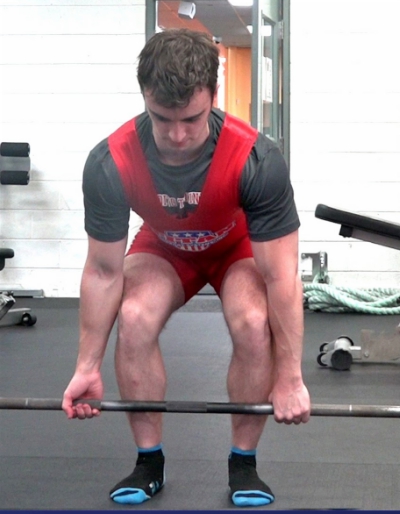
…you place your feet outside of your arms, like this:
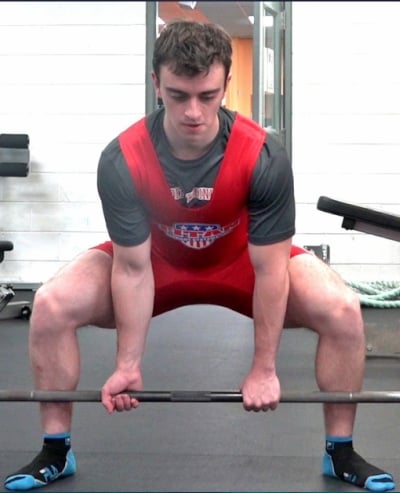
For most people, this means placing your feet about twice as wide as you would for a conventional deadlift.
Aside from your feet placement, there are two other key differences between the sumo and conventional deadlift:
- Your toes will naturally point out to the side more.
- Your hands will likely grip the bar closer together.
Which Is Better:
The Sumo or Conventional Deadlift?
Theoretically, the conventional deadlift is better choice for building muscle than the sumo deadlift.
This is because the bar travels about 20% less during the sumo deadlift, which means your muscles have to do less work to complete each repetition, and less work means less muscle-building stimulus.
So, does that mean you shouldn’t sumo deadlift if you can pull conventionally?
Not necessarily.
First of all, the difference in range of motion is pretty small and thus unlikely to significantly impact your long-term results.
Second, studies show that both the sumo and conventional deadlift produce about the same amount of total muscle activation, although not in the same ways.
The sumo deadlift trains your quads slightly more while the conventional deadlift places more strain on your back muscles.
Again, however, it should be noted that the differences here are small (about 10% in both cases), and the relationship between muscle activation and muscle hypertrophy isn’t clear just yet (higher levels of muscle activation doesn’t necessarily equate to more muscle growth).
So, mechanically speaking, the differences between sumo and conventional deadlifting are too small to say that one is clearly superior to the other for gaining muscle and strength.
Is the Sumo Deadlift Safer?

When you sumo deadlift, you start with your back almost vertical. As a result, your back muscles (and your low-back in particular) don’t have to work as hard to keep your spine upright as you ascend.
This is why many people think that the sumo deadlift is safer than conventional deadlifts.
As you just learned, though, the sumo deadlift places more or less the same amount of stress on your back muscles, so this is a moot point. It might look safer, but as far as your lumbar spine goes, it’s more or less the same.
That said, as the sumo deadlift does place slightly less strain on the back, it may be best for people with back problems.
Which Style of Deadlifting Is Right For You?
Our bodies are comprised of the same anatomical components, but slight differences in how they’re arranged can make one style of deadlifting more suitable than another.
This largely comes down to the length of your femur (thigh bone) and how it attaches to your hips.
If you have long femurs, then you’re going to find conventional deadlifting particularly difficult as the range of motion is extended. This is why many tall people prefer the slightly shorter range of motion of the sumo deadlift.
The part of the femur that attaches to your hip is called the “neck,” and it looks like this:
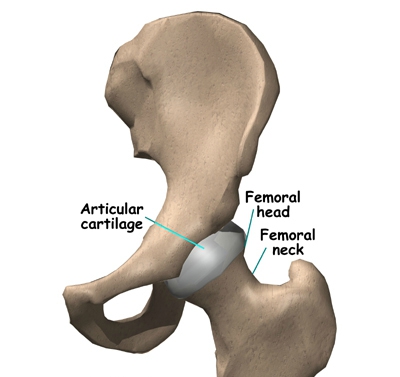
The angle of the femur neck varies considerably from person to person, which you can see here:
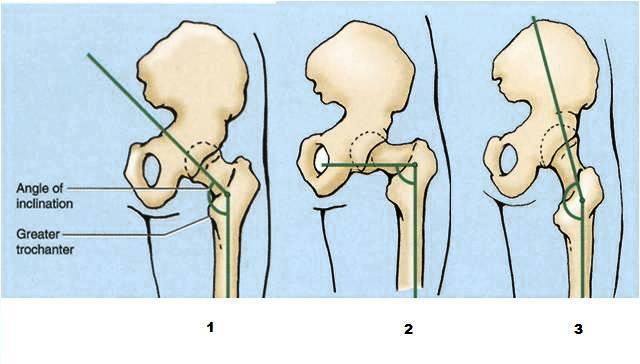 If your femur attaches at a 135-ish-degree angle (like the first example,) then you’ll probably find both the sumo and conventional deadlift equally comfortable.
If your femur attaches at a 135-ish-degree angle (like the first example,) then you’ll probably find both the sumo and conventional deadlift equally comfortable.
If your femur attaches at an angle closer to 90 degrees (the second example), however, then sumo deadlifting is going to feel very uncomfortable because the top of your femur is going to run into your hip bone when you try to deadlift with a wide stance.
And if your femur attaches at an extremely obtuse angle closer to 160-ish degrees (the third example), then chances are you’re going to prefer the sumo deadlift.
Now, you can easily assess your femur length but probably don’t know the details of your hip anatomy, so here’s a simple rule of thumb for finding which style of deadlifting is best for you:
The style that’s best for you is the one that you find most comfortable and that best meets your training needs.
In other words, if one style of deadlifting produces pain, tightness, or discomfort, then switch to the other and see how you do with it.
If both styles are equally comfortable to you, then then your choice comes down to personal preference.
If you’re happy with your back development and want bigger legs, then you may want to deadlift sumo style. If you feel your back is lagging, however, then conventional might make more sense.
Many people also like to switch styles every few months or so just to expose their bodies to new types of muscle-building stimuli.
How to Sumo Deadlift
If you’re used to conventional deadlifting and are considering a change to sumo, you should know that it’s harder to learn.
When you pull conventionally, you basically just walk up to the bar, squat down to grab it, and stand up with a neutral spine and with your hips and shoulders rising at the same pace. (Yes, there’s a bit more to it, but that’s what it boils down to.)
The sumo deadlift involves a lengthier and more complicated setup process, however, making it more difficult to master.
This is one of the primary reasons I don’t include the sumo deadlift in my Bigger Leaner Stronger and Thinner Leaner Stronger programs. The conventional deadlift is equally good for gaining muscle and strength and far easier to learn and thus progress on (especially when you’re new to weightlifting).
With practice, though, anyone can learn how to sumo deadlift with good form. You just have to know what you’re doing.
Let’s see how it’s done.
Step 1: Position Your Feet
Walk up to a loaded bar, position your feet just outside of shoulder-width apart, and point your toes out to the side at about 25 degrees, like this:

Next, drop your butt down, letting your knees bend slightly while staying in line with your feet and keeping your back straight, like this:
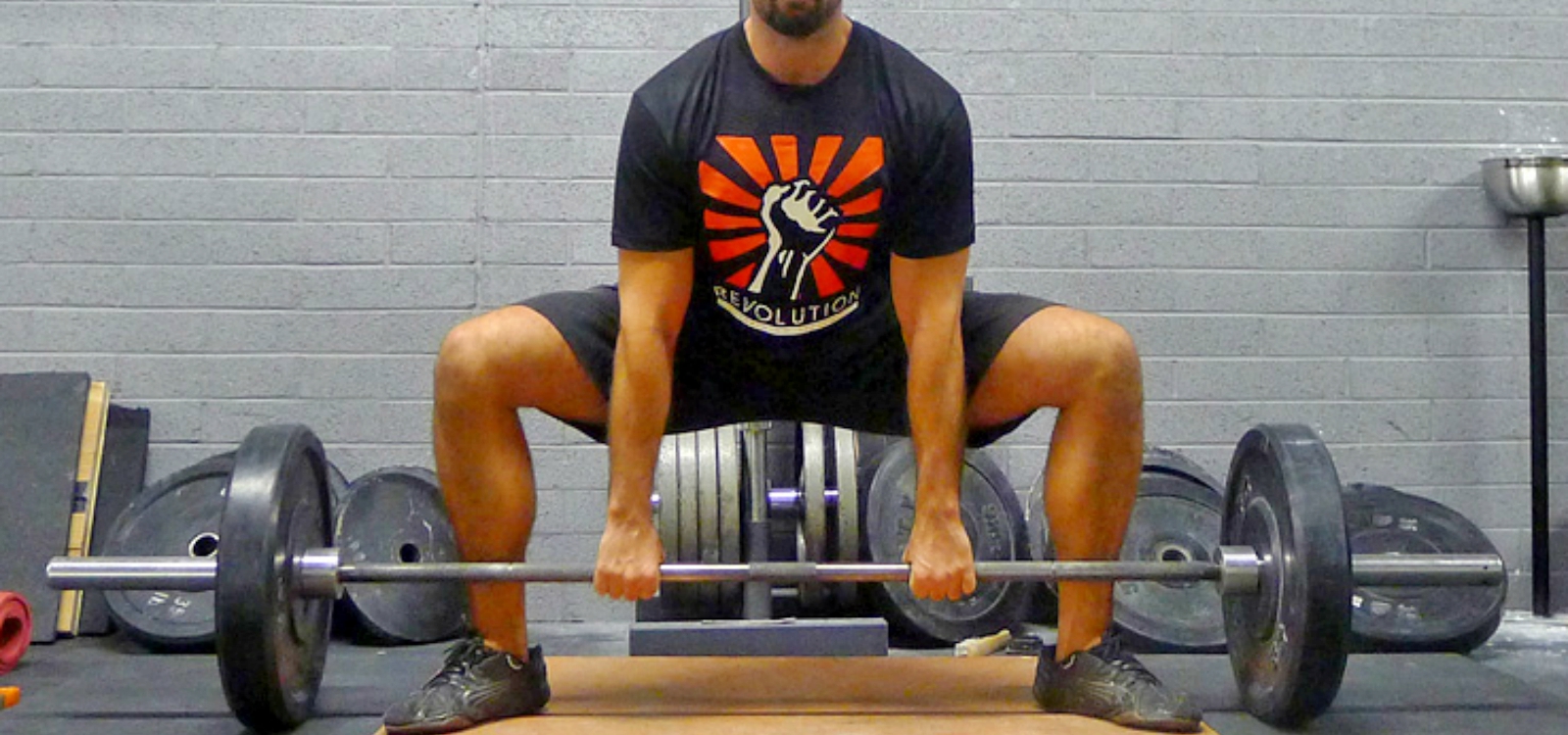
If you have trouble sitting down far enough to touch the bar without bending your back, you may need to adjust the width of your stance and angle of your feet. There is a lot of room for individual variation here–some people like their feet just outside of their arms, and others like their feet so wide they’re almost touching the plates.
If you can’t get into position no matter what you do, then you need to work on your lower-body mobility.
You have it right when your shins are vertical and you can comfortably grip the bar, like this:
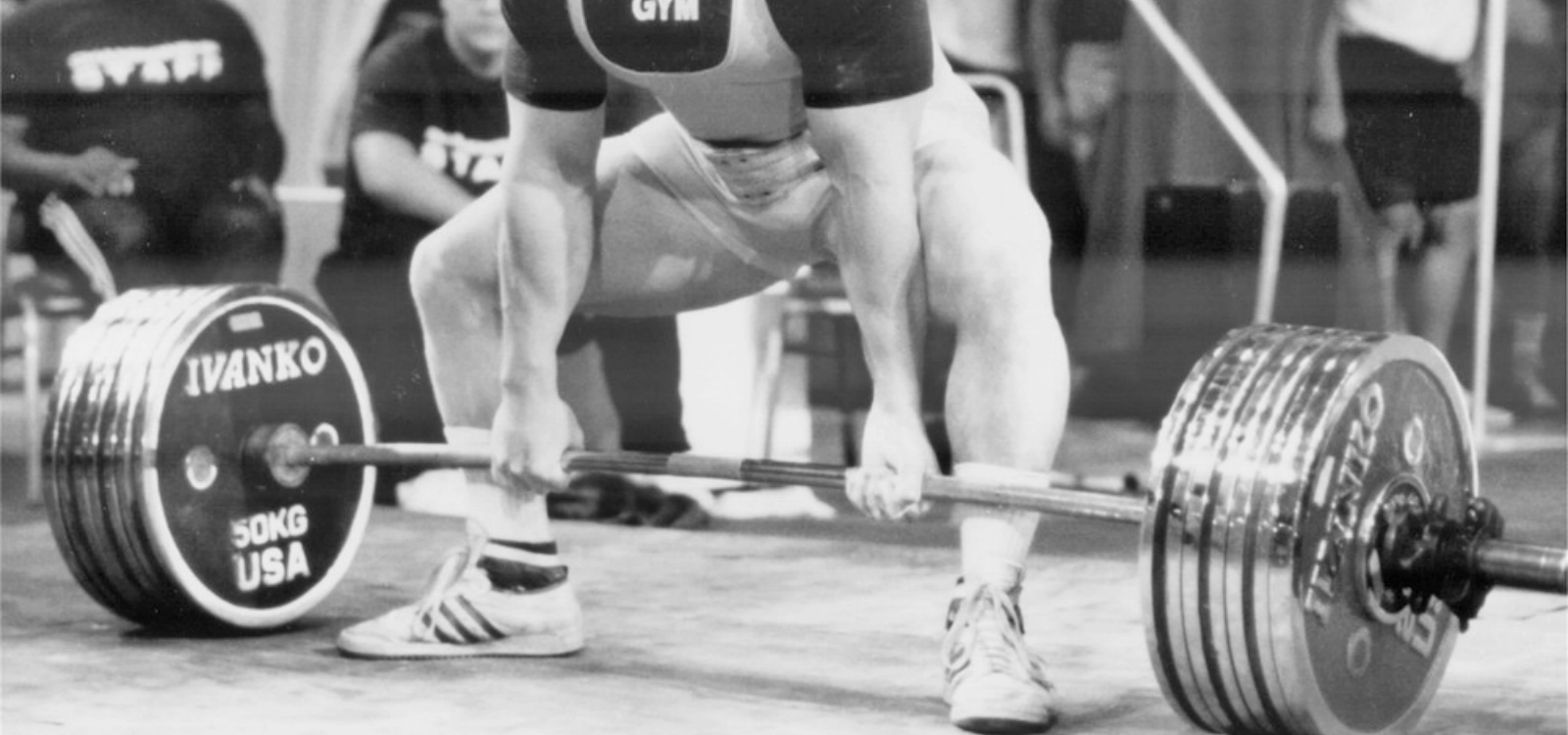
You’ll probably find that your setup changes slightly over time as you get more comfortable with the lift, so don’t be afraid to play around with slightly different positions for your feet and hands.
Step 2: Grip the Bar
There are several different kinds of deadlift grips to choose from, but most people who pull sumo prefer the double overhand and hook grips.
Here’s what the double overhand looks like:
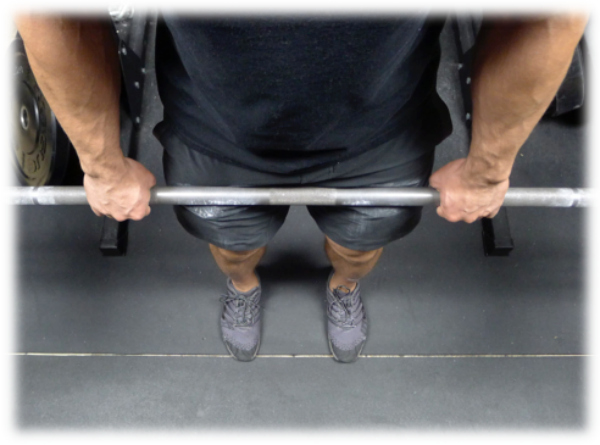
And the hook:
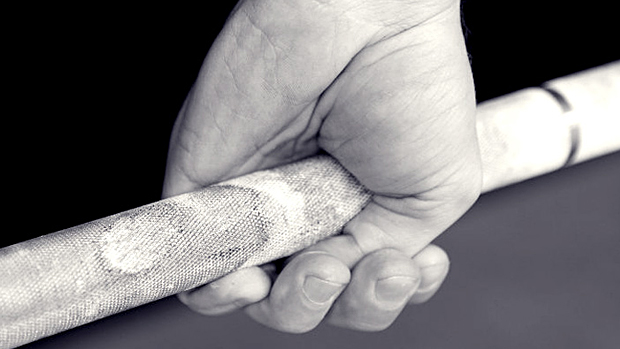
(In case you’re wondering the difference between the two, in the hook grip, your thumb goes under your fingers, in the mixed grip it goes on top.)
The mixed grip is popular too, which looks like this:
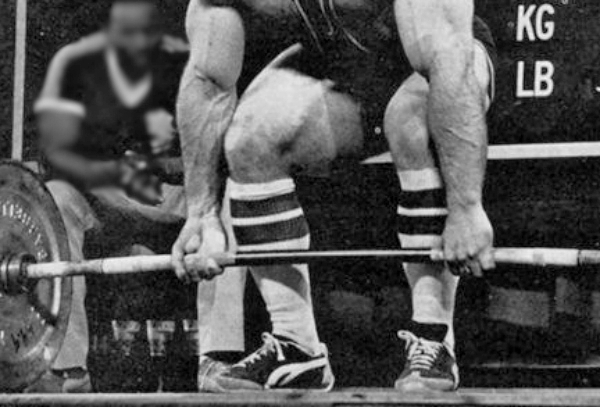
This grip makes it easier to hold onto the bar without having to sacrifice your thumbs, but it has a major disadvantage for sumo deadlifting.
Specifically, when gripping the bar this way, your torso naturally rotates toward your palm-down hand, which can pull you off balance as you ascend. This isn’t a big deal for conventional pulling, but the wide stance of the sumo deadlift makes it harder to maintain your balance.
So, while you can use a mixed grip while sumo deadlifting, I recommend you start with a double overhand or hook grip and only use a mixed grip once you’re good at the movement (or add straps if you’re using the double overhand grip, as detailed here).
In terms of grip width, most people prefer to position their hands a little closer than they would when pulling conventionally, but you should find what’s most comfortable for you.
So, at this point in the movement, you should be able to check each of the following boxes:
- Your shins are vertical.
- Your knees are pointing in the same direction as your toes.
- Your back is flat.
- Your shoulders are in their normal, neutral position and directly over the bar.
- Your chest is high and pointing directly at you in the mirror.
Here’s what a proper setup looks like from the front:
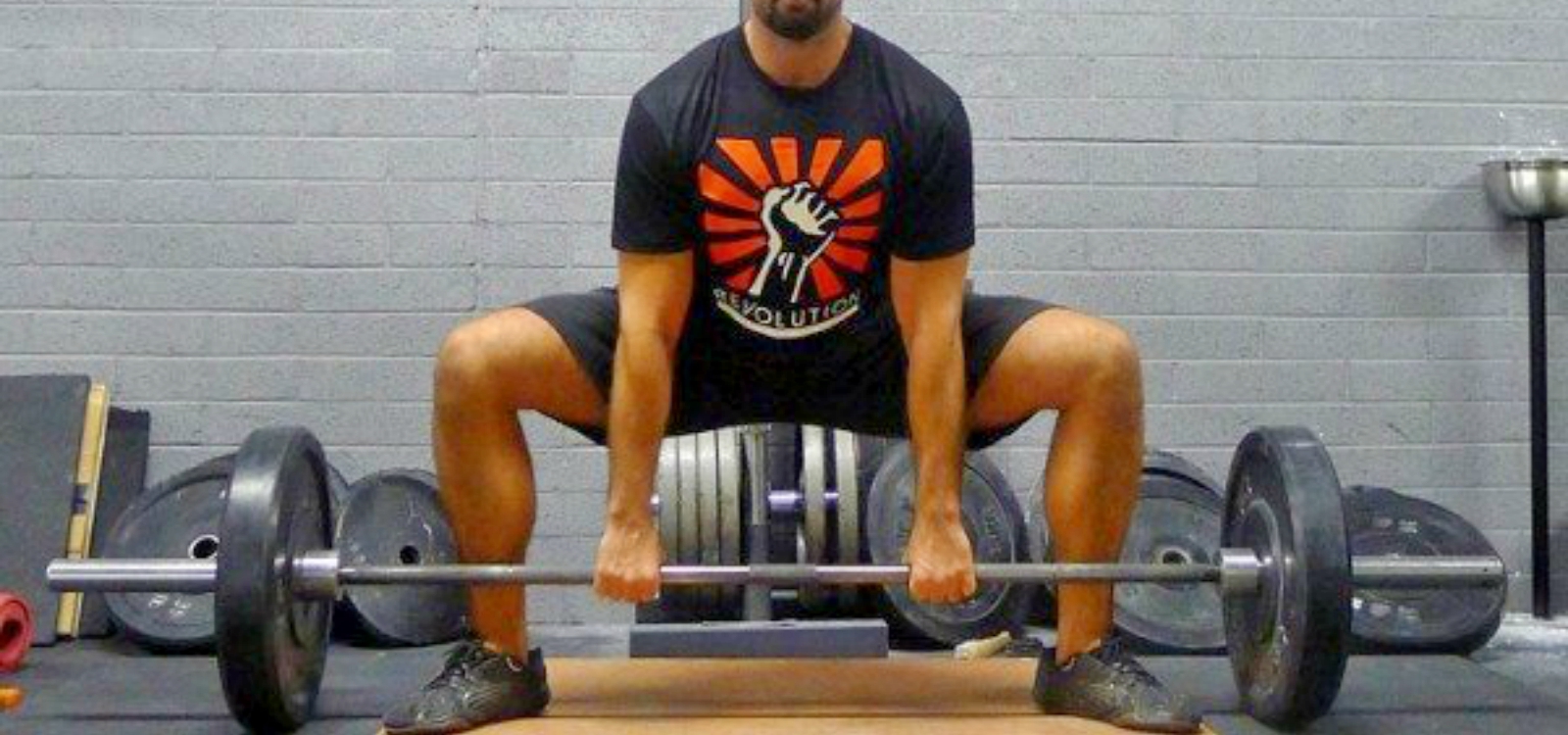
And here it is from the side:
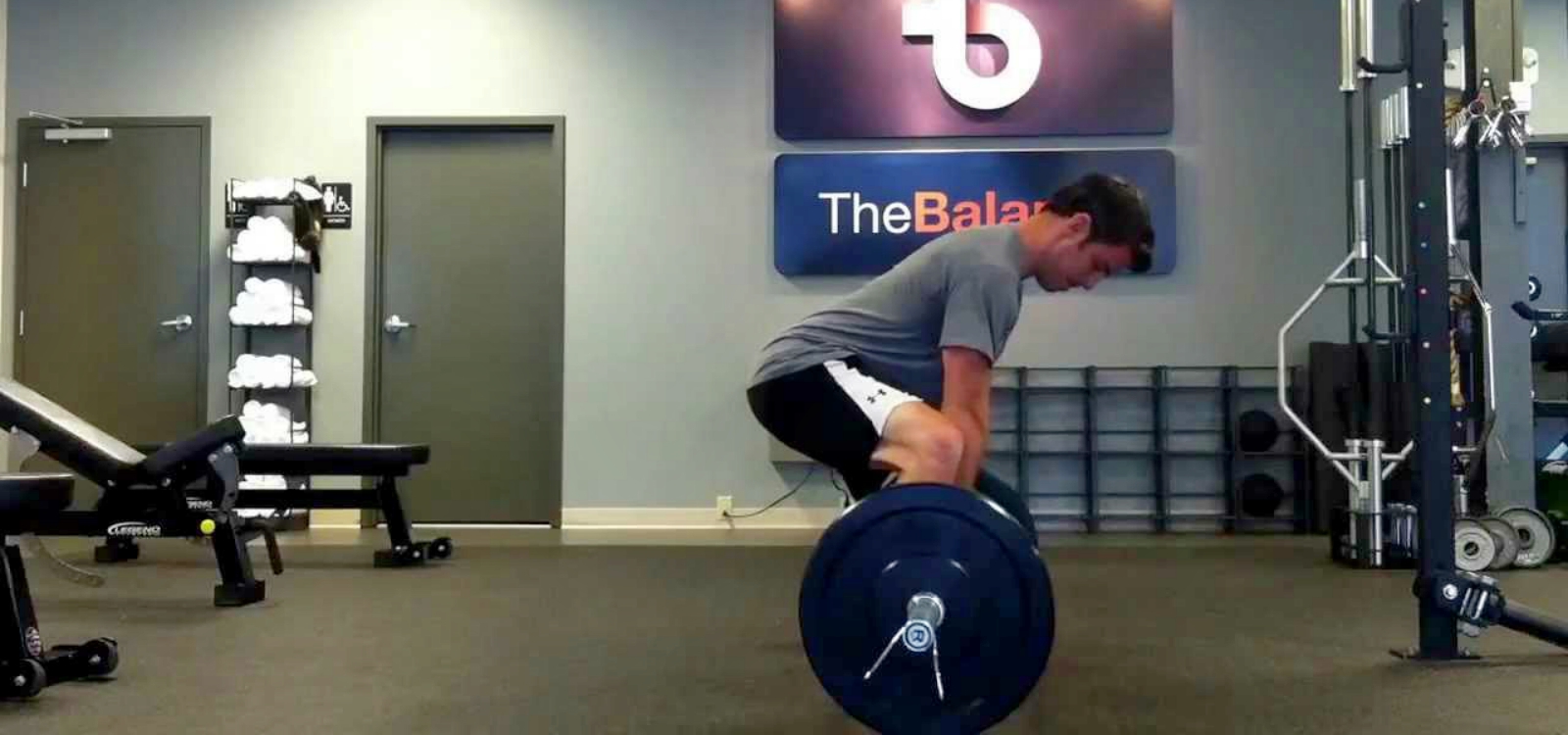
Once you’re in that position, you’re ready to pull.
Step 3: Pull
This is where the sumo deadlift varies greatly from the conventional because it’s much harder to get the bar off the floor, but easier to lock out.
In other words, you’re more likely to get stuck on the first half of the lift (“breaking the floor”) when pulling sumo and second half (“lockout”) when pulling conventionally.
Now, in terms of how to actually pull, most people initiate it with one of two strategies:
- The static start, where you sit into position, grip the bar, and then pull.
- The moving start, where you grip the bar first, and then in one smooth motion, drop your butt, push your knees out to the side, flatten your back, and pull.
Which style you use really depends on what’s most comfortable for you, but I recommend you use the static start until you’ve really grooved the exercise in.
Once you’re in the right position, the pull is little more than taking a deep breath and standing up. That said, here are a few cues that will help you get it right:
- Spread the floor apart with your feet.
- Keep your chest up.
- Pull your butt down to the bar.
Another rather odd but effective cue for keeping your back and shoulders in the right positions is imagining crushing lemons in your armpits as hard as you can.
As you ascend, you also want to make sure that you don’t allow the bar to drift forward. Instead, drag the bar up your shins.
You can get away with a little forward bar motion when pulling conventionally, but even a slight deviation will throw your balance off on the sumo deadlift.
This is why most everyone that pulls sumo wears pants or leggings, thick knee socks, or even shinguards. Personally I would use knee sleeves to protect my shins, which I like to use over my knees when I squat.
You’re done pulling when you’re fully standing up, like this:

Step 4: Reset
To reset for your next rep, you want to let the bar descend straight down, reversing the movement pattern that you just completed.
The wrong way to do this, however, is how most people do it: by dropping the weight to the floor and bouncing right into the next rep.
This will allow you to squeeze out a few more reps in each set, but it also makes the exercise easier, partially defeating the purpose, and increases the chances of your form slipping (thus increasing the risk of injury).
Instead, reset the hard way: lower the bar to your knees before dropping it, check and adjust your setup as needed, and then perform your next rep.
This is harder and makes your sets take a little longer, but it’s also safer and better for improving technique and gaining muscle and strength.
How to Increase Your Sumo Deadlift

As with any exercise, the only way to get stronger on the deadlift is to expose your muscles to greater and greater levels of tension.
And the most effective way to do that is to add weight to the bar over time.
Here are a handful of tips that will help you do just that:
Do 3 sets of heavy (80 to 85% of 1RM) deadlifts per week.
This will give you a nice balance of intensity and volume while also allowing plenty of time for recovery (the deadlift is one of the most taxing exercises you can do).
Rest 3 minutes in between each set.
This will allow you recover most of your strength in between sets, which makes for better progress over time.
Don’t go to muscle failure.
Training to muscle failure (the point where you simply can’t get another rep) has its uses, but it shouldn’t be done on the deadlift because it’s an easy way to get hurt.
Instead, end your deadlift sets with one or two reps still in the tank.
Once you hit the top of your rep range for one set, move up in weight.
For example, if you’re training heavy, you’ll be working in the 4 to 6 or 5 to 7 rep range, and once you hit 6 or 7 reps for one set, you add 5 pounds to each side of the bar and work with that weight until you can pull it for 6 or 7 reps, and so forth.
Here’s what this might look like over a four week period:
| Week | Sets | Reps | Weight |
| 1 | 3 | 4, 4, 5 | 135 |
| 2 | 3 | 6, 5, 4 | 135 |
| 3 | 3 | 4, 4, 4 | 145 |
| 4 | 3 | 4, 5, 5 | 145 |
The Bottom Line on the Sumo Deadlift
Of all the exercises you can do to build whole-body muscularity and strength, the deadlift is king.
The sumo deadlift is a perfectly valid variation but isn’t for everyone.
If you have pain or discomfort while pulling sumo, then stick with conventional deadlifts. Chances are you just aren’t built for that movement. If you can pull both conventional and sumo, then which style you use depends on your preferences and training goals.
The sumo deadlift also has a shorter range of motion than the conventional deadlift, but the difference is probably negligible in terms of actual results.
In other words, while the conventional deadlift may be better on paper for getting big and strong, you’re unlikely to see a difference in practice.
Lastly, the sumo deadlift also doesn’t load your back as much as the conventional deadlift does and emphasizes your quads slightly more, but again, the differences in muscle activation are small and probably insignificant.
So, in the final analysis, if you find the sumo deadlift more comfortable than the conventional, or if you’re looking to maximize leg development (and can pull sumo comfortably), then the sumo deadlift is for you. If not, then it’s not.
What’s your take on the sumo deadlift? Have anything else you’d like to share? Let me know in the comments below!
Scientific References +
- BJ, S., ZK, P., FM, B., GM, H., J, S., JL, N., JA, S., KE, B.-W., AS, C., CL, R., BL, J., M, H., & JW, K. (2016). Longer Interset Rest Periods Enhance Muscle Strength and Hypertrophy in Resistance-Trained Men. Journal of Strength and Conditioning Research, 30(7), 1805–1812. https://doi.org/10.1519/JSC.0000000000001272
- J Cholewicki, & S M McGill, R. W. N. (n.d.). Lumbar spine loads during the lifting of extremely heavy weights - PubMed. Retrieved August 10, 2021, from https://pubmed.ncbi.nlm.nih.gov/1758295/
- RF, E., AC, F., AV, K., KP, S., & CT, M. (2002). An electromyographic analysis of sumo and conventional style deadlifts. Medicine and Science in Sports and Exercise, 34(4), 682–688. https://doi.org/10.1097/00005768-200204000-00019
- GE, M., CI, M., A, B., K, W., & GL, O. (2014). Impact of range of motion during ecologically valid resistance training protocols on muscle size, subcutaneous fat, and strength. Journal of Strength and Conditioning Research, 28(1), 245–255. https://doi.org/10.1519/JSC.0B013E318297143A
- RF, E., AC, F., GS, F., SW, B., CM, W., AV, K., KP, S., & JR, A. (2000). A three-dimensional biomechanical analysis of sumo and conventional style deadlifts. Medicine and Science in Sports and Exercise, 32(7), 1265–1275. https://doi.org/10.1097/00005768-200007000-00013










